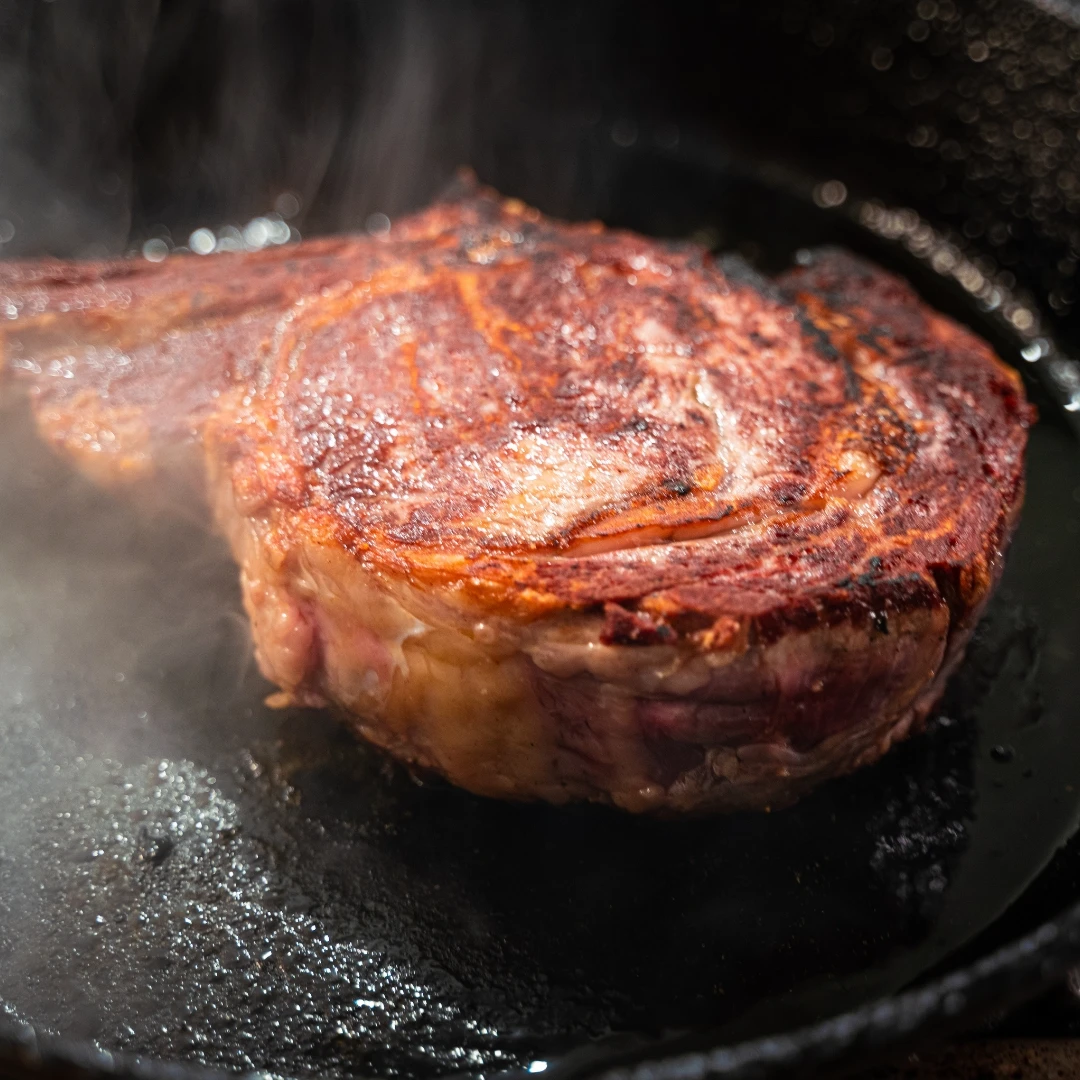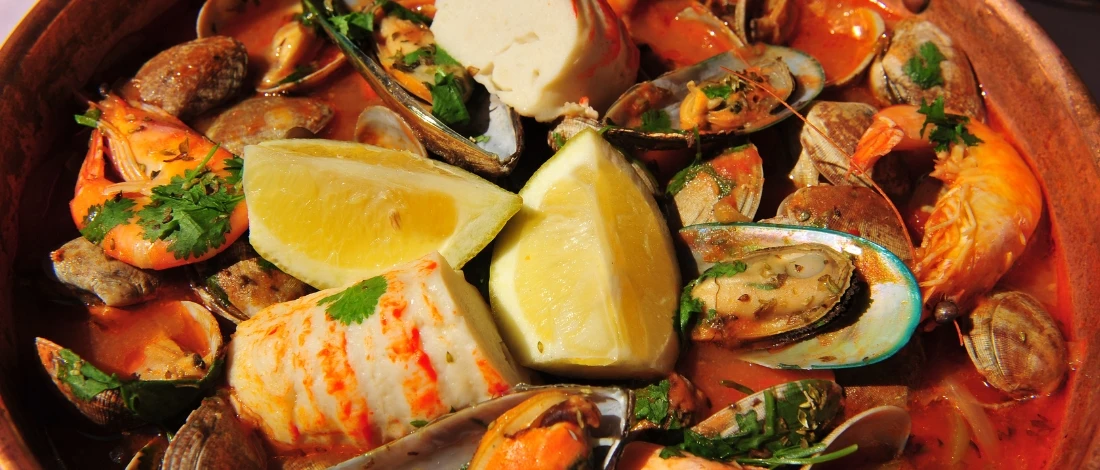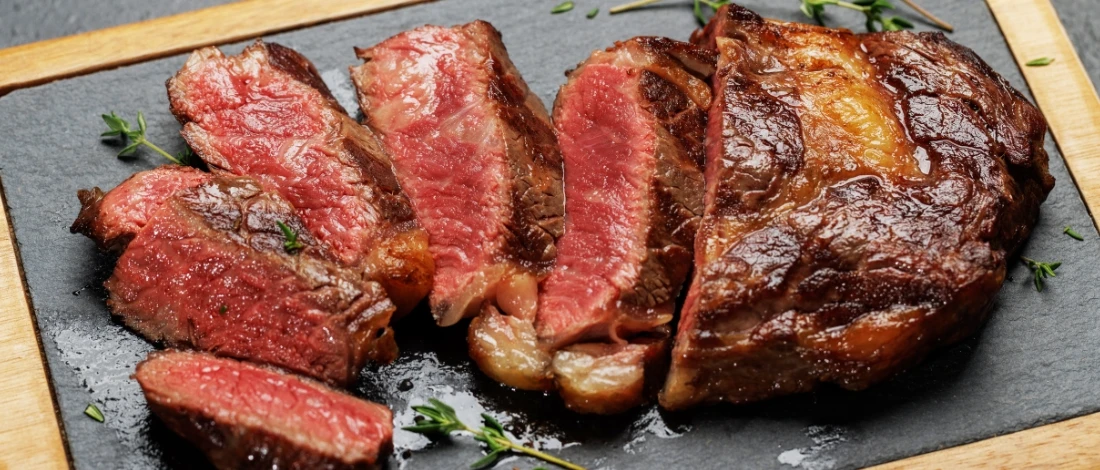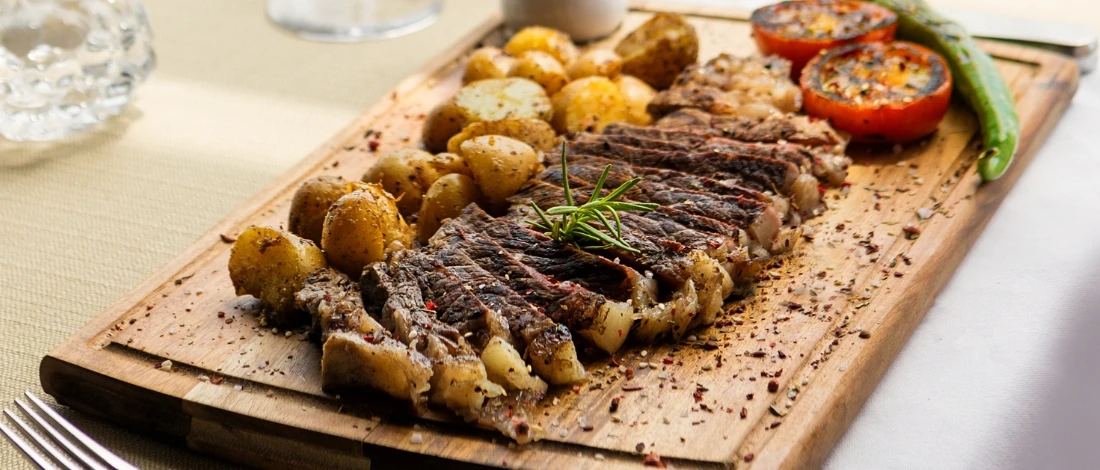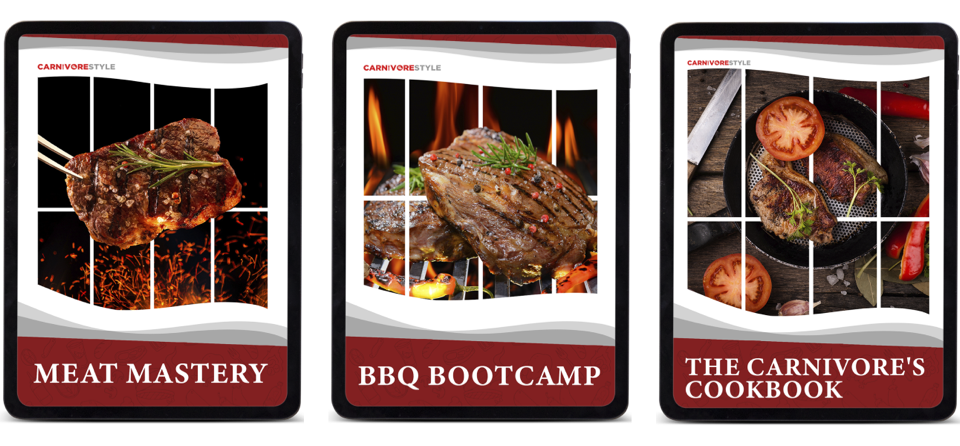Bison ribeye is one of my favorite cuts to cook at home. It is leaner than beef, but still tender and flavorful when cooked right.
I like making this when I want something rich but a little lighter than a classic ribeye. If you have never tried bison before, this is the recipe to start with.
You do not need anything fancy - just a hot pan, a little seasoning, and good timing. Let me walk you through it.
Recipe Overview
- Prep Time: 10 minutes
- Cook Time: 10 minutes
- Rest Time: 5 minutes
- Total Time: 25 minutes
- Servings: 2
Ingredients

- 2 bison ribeye steaks (8–10 oz each)
- 1 tablespoon olive oil
- Salt and black pepper to taste
- ½ teaspoon garlic powder
- 1 medium onion (optional)
- 1 teaspoon fresh rosemary (optional)
- 1 tablespoon butter
- Lemon wedge (optional)
- Fresh herbs for garnish
Instructions
Walk through each of these steps to get it just right.
Step 1: Let the Steaks Sit Out
Start by taking the bison steaks out of the fridge at least 20 minutes before cooking. This helps them cook evenly from edge to center. While the steaks sit, season both sides generously with salt and pepper. Sprinkle on garlic powder for added flavor, and add a pinch of chopped fresh rosemary if you want an earthy aroma.
Step 2: Heat Your Pan
Use a cast iron skillet or heavy stainless steel pan - something that holds heat well. Set it over medium-high heat and give it a few minutes to get hot. Add olive oil and let it shimmer. You should see a little smoke - that means it is ready. A properly heated sauté pan will help you get that beautiful brown crust on the steak.
Step 3: Cook the Steaks
Place the steaks in the pan gently and let them sit without touching them. Do not press them down or move them around. Let each side sear for 3 to 4 minutes to build a flavorful crust. You should hear a steady sizzle the whole time.
After flipping, you can add a tablespoon of butter to the pan and spoon it over the steak for extra richness. At this point you can also add onions and let it caramelize with the meat. Use a meat thermometer to check for desired doneness - 130°F is ideal for medium-rare.
Step 4: Rest the Meat
Once cooked, move the steaks to a clean plate. Tent them with foil and let them rest for at least 5 minutes. This helps the juices redistribute inside the steak so it stays moist when you cut it. Cutting too early will let all that flavor spill out onto the plate.
Step 5: Slice and Serve
Slice the steak against the grain to make it more tender. The grain looks like lines running through the meat - cutting across them shortens the fibers. Drizzle with any juices left on the plate, add a squeeze of lemon if you like brightness, and garnish with herbs. Serve hot for great flavor.
Recipe Notes

- Bison cooks faster than beef: Because it has less fat, it hits medium-rare quicker. Always use a thermometer if you are unsure - 130°F is your target for medium-rare.
- Keep seasoning simple: Let the flavor of the meat shine. Garlic, salt, and rosemary are enough. Too much seasoning can overwhelm bison’s naturally rich taste.
- Avoid overcooking: Bison can go from perfect great steak to dry in a minute. Stay nearby and do not walk away while it cooks.
- Resting is not optional: That 5-minute rest keeps your steak from drying out when sliced. Skipping this step is one of the most common mistakes.
- Buy and store properly: Fresh bison should be used within 2 days of purchase. If freezing, wrap it tightly in freezer paper and use within 3 months.
"Bison is packed with rich, clean flavor. Cook it like a fine steak, but with just a bit more care.”
- Allen Smith, Executive Chef
Nutrition Facts (Per Serving)
- Calories: ~420
- Protein: 47g
- Fat: 25g
- Cholesterol: 110mg
- Carbs: 4g
Best Side Dishes to Pair With

I like serving this sauce with sides that balance out the richness - here are a few of my go-to pairings that never miss.
Garlic Mashed Cauliflower
Creamy mashed cauliflower with garlic and butter is a great low-carb choice that feels comforting but still light. It soaks up the juices from the steak without weighing you down.
Roasted Sweet Potatoes
Chop sweet potatoes into cubes, toss them in olive oil, salt, and smoked paprika, then roast until crispy. The natural sweetness brings out the savory side of the bison and adds color to the plate.
Grilled Asparagus
Asparagus grilled until it is lightly charred adds a smoky, crisp texture that balances the richness of the steak. A little lemon zest or parmesan on top takes it to the next level.
Mixed Greens with Balsamic
A fresh salad with arugula, baby spinach, and a tangy balsamic vinaigrette is a great palate cleanser. It adds crunch and acidity to the meal, helping cut through the meat’s richness.
Sautéed Mushrooms
Cook sliced mushrooms in butter with a touch of garlic until golden. Their deep umami flavor pairs beautifully with the earthy notes of bison, creating a steakhouse-style vibe at home.
How to Pick the Perfect Bison Meat

I have cooked with bison quite a bit, and if you're new to it, here’s how to pick the best cuts to get the most flavor and tenderness.
Go for Deep Red Color
Bison meat should appear darker than beef - think deep cherry or wine red. This color signals freshness and less exposure to oxygen. Avoid cuts that look gray or pale, which often means the meat has sat too long or is starting to oxidize.
Look for Fine Marbling
While bison is naturally lean, you still want to see tiny streaks of white fat running through the meat. These small bits of marbling help with tenderness and flavor. Too much fat can make it greasy, but too little may dry it out. Fine, even marbling is the sweet spot.
Firm Texture Means Freshness
When you gently press the steak, it should spring back slightly but feel firm—like pressing into your palm. A mushy or overly soft steak could mean it's not fresh or was poorly handled during processing.
Check for Moisture and Clean Edges
The surface should look moist but not wet or slimy. The edges should be sharp and clean—not dried out, shriveled, or brown. Avoid any steaks with strange smells or discoloration.
Choose Grass-Fed and Humanely Raised
Grass-fed bison usually has better flavor and texture, and is often raised without hormones or antibiotics. Ask your butcher about how it was raised. The cleaner the source, the better the meat will taste and cook.
Related Articles:
FAQs
1. Can I Grill Bison Ribeye Instead of Pan-Searing?
Yes, you can grill bison ribeye instead of pan-searing. Grill over medium-high heat for 3 to 4 minutes per side. Use a meat thermometer to avoid overcooking—it is easy to go too far with lean meats like bison.
2. Is Bison Healthier than Beef?
Yes, bison is healthier than beef. It is lower in saturated fat and calories but still high in protein and iron. It is a great option if you want lean red meat without giving up flavor.
3. Can I freeze cooked bison steak?
Yes, you can freeze cooked bison steak. Let it cool completely, then slice and store in an airtight container or freezer-safe bag. Reheat on low heat to avoid drying it out.


